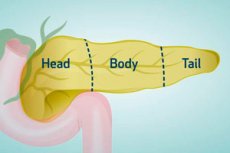
19 May 2024, 21:00
一项新研究发现,胰腺癌细胞根据其在器官中的位置而有所不同,这为有关肿瘤的新信息提供了可能,并可能带来更有针对性的治疗。
胰腺导管腺癌(PDAC) 是一种侵袭性极强的癌症,过去十年确诊数量显著增加。目前,PDAC 是全球男性和女性癌症死亡的第七大原因,预计到 2030 年将成为全球癌症相关死亡的第三大原因。PDAC 的发病率增长源于多种因素,例如肥胖和糖尿病的增多。
休斯顿卫理公会医院胃肠肿瘤内科主任、医学博士Maen Abdelrahim是发表在《npj Precision Oncology》杂志上的文章《胰腺导管腺癌头部与体尾部比较分子分析》的第一作者和概念作者。研究团队发现,胰腺肿瘤的解剖位置是影响系统性治疗干预结果的重要因素。
Abdelrahim 及其同事假设,胰头肿瘤的微环境与胰体和胰尾肿瘤的微环境存在差异,特别是在胰腺各个部位发现的免疫治疗受体方面。
“通过关注肿瘤周围的生物学特性并考虑其在胰腺中的位置,我们可以更好地评估治疗方案,”Abdelrahim 说道。“与其用胰腺恶性肿瘤这个笼统的术语来治疗患者,不如转向基于肿瘤位置的治疗模型,这可能会显著改变临床医生制定初步治疗方案的方式。”
研究小组希望这一发现能够帮助临床医生制定更具体的治疗方案并改善患者的治疗效果。

